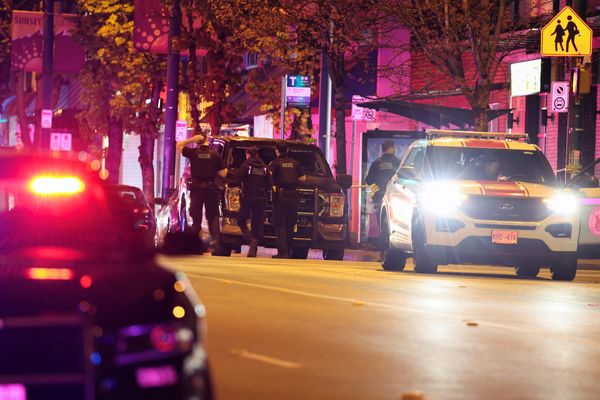
Photograph: Eugene Hoshiko/AP
Medical experts in Japan are to add a “most severe” category to the current heatstroke index, amid warnings that the extreme heat is straining medical services and causing damage to public health comparable to that in a “natural disaster”.
The Japanese Association for Acute Medicine said it would add a fourth category to the three-level classification later this year in an attempt to reduce deaths from heatstroke.
The announcement came in the same week as authorities in Tokyo said six people had died from the effects of a heatwave that has sent temperatures as high as 40C in some parts of the country – well above the 35C threshold classified by weather officials as “extremely hot”.
The association said the death toll from heat exhaustion had risen from a few hundred a year two decades ago to around 1,500 in 2022. The sheer number of fatalities suggests that heatstroke now poses a danger on par with that of “a major natural disaster”, it said, while urging people not to go outside unless absolutely necessary.
In its index, the least serious classification is mild heatstroke – associated with symptoms such as dizziness and profuse sweating. Next come moderate cases, where symptoms include headaches and vomiting, according to the Mainichi Shimbun newspaper.
The third level is severe, where patients can lose consciousness and experience convulsions, while the new “most severe” category will apply to people with a core temperature of 40C or higher and an inability to communicate.
Tokyo authorities have urged people to avoid physical activity as the environment ministry issued “danger”-level alerts in response to days of temperatures in the upper 30s.
“Cooling shelters” have been set up around the capital to offer respite from the heat and humidity. Hisako Ichiuji, a 60-year-old woman who was taking a break at a shelter near Tokyo Tower, described the heat as “a life-threatening emergency”.
The shelters are part of a scheme adopted this year to allow people to enter libraries and other public buildings equipped with air conditioners to cool off after heat warnings have been issued.
“The temperature wasn’t like this in the past,” Ichiuji said. “I think it’s important to keep ourselves hydrated, and take shelter in a facility like this.”
Around Japan, several people had died since the heatwave intensified last week, according to reports, including an 86-year-old farmer in the country’s south-west whose body was found in a field surrounded by towels and bottles of water.
The fire and disaster management agency said the number of people taken to hospital for heatstroke during the week ending Sunday had quadrupled from the previous week, as Tokyo and other areas experienced record temperatures for this time of the year.
Just over 9,000 people sought emergency care for suspected heatstroke nationwide, the Japan Times reported, citing the agency – more than twice the number during the same period last year.
The extreme heat in Japan – a result of global heating and a strong high-pressure system in the South Pacific – poses a particularly serious threat to the country’s large population of people aged over 64, who accounted for almost 60% of emergency hospital visits for heatstroke last week.
In the capital’s Minato ward, authorities this week sent residents a message warning that the Tokyo fire department, which operates the capital’s ambulance service, was “under pressure”. They added: “Please take care of your health and use ambulances appropriately.”
Tokyo resident Sumiko Yamamoto, 75, said she felt the city had got “drastically hotter” since last year. “I find it difficult to survive without the AC on,” she said. “Using the advice given on TV, I try to stay hydrated. And because I’m old, I’m being careful not to collapse.”
According to the Tokyo fire department, ambulance callouts rise significantly when the temperature is in the 25C-35C range and humidity is between 50% and 80%.
Agencies contributed reporting.







